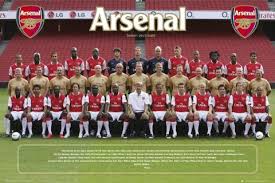 | 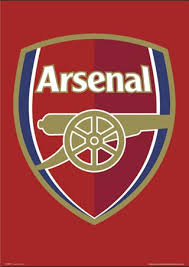 |  |  | 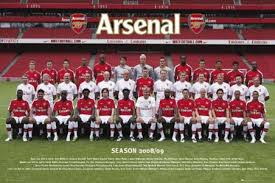 |
English Premier League
England
The Barclays English Premier League (EPL), considered as the best in the world.
Arsenal vs Aston Villa
Match scheduled:
Date: 27-12-2009
Time:13:30 until 15:30
Week 19 / Round 19 :: Barclays Premier League 2009/2010
Mercer's forced retirement from the club in 1964 signaled a period of deep turmoil. The most successful club in England was struggling to keep pace with changes in the modern game, with Villa being relegated for the third time, under manager Dick Taylor in 1967. The following season the fans called for the board to resign as Villa finished 16th in the Second Division. With mounting debts and Villa lying at the bottom of Division Two, the board sacked Cummings (the manager brought in to replace Taylor), and within weeks the entire board resigned under overwhelming pressure from fans.[20] After much speculation, control of the club was bought by London financier Pat Matthews, who also brought in Doug Ellis as chairman.[20] However, new ownership could not prevent Villa being relegated to the Third Division for the first time at the end of the 1969–70 season. However, Villa gradually began to recover under the management of former club captain Vic Crowe. In the 1971–72 season they returned to the Second Division as Champions with a record 70 points.[21] In 1974 Ron Saunders was appointed manager. His brand of no-nonsense man-management proved effective, with the club winning the League Cup the following season. By 1977 he had taken them back into the First Division and Europe.[22]
Villa were back amongst the elite as Saunders continued to mould a winning team. This culminated in a seventh top-flight league title in 1980–81. To the surprise of commentators and fans, Saunders quit halfway through the 1981–82 season, after falling out with the chairman, with Villa in the quarter final of the European Cup. He was replaced by his softly-spoken assistant manager Tony Barton who guided the club to a 1–0 victory over Bayern Munich in the European Cup final in Rotterdam courtesy of a Peter Withe goal. The following season Villa were crowned European Super Cup winners, beating Barcelona in the final. This marked a pinnacle though and Villa's fortunes declined sharply for most of the 1980s, culminating in relegation in 1987.[23] This was followed by promotion the following year under Graham Taylor and a runners-up position in the First Division in the 1989-90 season.[24]
Villa were one of the founding members of the Premier League in 1992, and finished runners-up to Manchester United in the inaugural season. For the rest of the Nineties however Villa went through three different managers and their league positions were inconsistent, although they did win two League Cups and regularly achieved Uefa Cup qualification. Villa reached the FA Cup final in 2000 but lost 1–0 to Chelsea in the last game to be played at the old Wembley Stadium.[5] Again Villa's league position continued to fluctuate under several different managers and things came to a head in the summer of 2006 when David O'Leary left in acrimony.[25] After 23 years as chairman and single biggest shareholder (approximately 38%), Doug Ellis finally decided to sell his stake in Aston Villa due to ill-health. After much speculation it was announced the club was to be bought by American Businessman Randy Lerner, owner of NFL franchise the Cleveland Browns.[26] The arrival of a new owner and manager Martin O'Neill marked the start of a new period of optimism at Villa Park and sweeping changes occurred throughout the club including a new crest, a new kit sponsor and team changes in the summer of 2007.[9][27]
Aston Villa's current home venue is Villa Park, which is a UEFA 4-star rated stadium, having previously played at Aston Park (1874–1876) and Perry Barr (1876–1897). Villa Park is the largest football stadium in the English Midlands, and the eighth largest stadium in England. It has hosted 16 England internationals at senior level, the first in 1899, and the most recent in 2005. Thus it was the first English ground to stage international football in three different centuries.[32]
Villa Park is the most used stadium in FA Cup semi-final history, having hosted 55 semi-finals. The Club have planning permission to extend the North Stand; This will involve the 'filling in' of the corners to either side of the North Stand. If completed, the capacity of Villa Park will be increased to approximately 51,000. The current training ground is located at Bodymoor Heath in north Warwickshire, the site for which was purchased by former Aston Villa Chairman Doug Ellis in the early 1970s from a local farmer. Although Bodymoor Heath was state-of-the-art in the 1970s, by the late 1990s the facilities had started to look dated. In November 2005, Ellis and Aston Villa plc announced a state of the art GB£13 million redevelopment of Bodymoor in 2 phases. However, work on Bodymoor was suspended by Ellis due to financial problems, and was left in an unfinished state until new owner Randy Lerner made it one of his priorities to make the site one of the best in world football. The new training ground was officially unveiled on 6 May 2007, by current manager Martin O'Neill, then team captain Gareth Barry and 1982 European Cup winning team captain Dennis Mortimer, with the Aston Villa squad moving in for the 2007–08 season.[33]
Club ownership
The first shares in the club were issued towards the end of the 19th century as a result of legislation that was intended to codify the growing numbers of professional teams and players in the Association Football leagues. FA teams were required to distribute shares to investors as a way of facilitating trading amongst the teams without implicating the FA itself. This trading continued for much of the 20th century until Doug Ellis started buying up many of the shares in the 1960s. He was chairman and substantial shareholder of "Aston Villa F.C." from 1968–1975 and the majority shareholder from 1982–2006. The club was floated on the London Stock Exchange in 1996, and the share price fluctuated in the ten years after the flotation.[34] In 2006 it was announced that several consortia and individuals were considering bids for Aston Villa.[35]
On 14 August 2006, it was confirmed that Randy Lerner, owner of the Cleveland Browns and native Ohioan had reached an agreement of GB£62.6 million with Aston Villa for a takeover of the club. A statement released on 25 August to the LSE announced that Lerner had secured 59.69% of Villa shares, making him the majority shareholder. He also appointed himself Chairman of the club.[36] In Ellis's last year in charge Villa lost GB£8.2m before tax, compared with a GB£3m profit the previous year, and income had fallen from GB£51.6m to GB£49m.[35] Randy Lerner took full control on 18 September as he had 89.69% of the shares. On 19 September 2006, Aston Villa plc executive Chairman Doug Ellis and his board resigned to be replaced with a new board headed by Lerner.[35]
Arsenal were founded as Dial Square in 1886 by workers at the Royal Arsenal in Woolwich, and were renamed Royal Arsenal shortly afterwards.[3] They renamed themselves again to Woolwich Arsenal after turning professional in 1891.[4] The club joined the Football League in 1893, starting out in the Second Division, and won promotion to the First Division in 1904. The club's relative geographic isolation resulted in lower attendances than those of other clubs, which led to the club becoming mired in financial problems and effectively bankrupt by 1910, when they were taken over by Henry Norris.[5] Norris sought to move the club elsewhere, and in 1913, soon after relegation back to the Second Division, Arsenal moved to the new Arsenal Stadium in Highbury, North London; they dropped "Woolwich" from their name the following year.[6] Arsenal only finished in fifth place in 1919, but nevertheless were elected to rejoin the First Division at the expense of local rivals Tottenham Hotspur, by reportedly dubious means.[7]

In 1925, Arsenal appointed Herbert Chapman as manager. Chapman had already won the league twice with Huddersfield Town in 1923–24 and 1924–25, and he brought Arsenal their first period of major success. His revolutionary tactics and training, along with the signings of star players such as Alex James and Cliff Bastin, laid the foundations of the club's domination of English football in the 1930s.[8] Under his guidance Arsenal won their first major trophies – an FA Cup in 1930 and two League Championships, in 1930–31 and 1932–33. In addition, Chapman was behind the 1932 renaming of the local London Underground station from "Gillespie Road" to "Arsenal", making it the only Tube station to be named specifically after a football club.[9]
Chapman died suddenly of pneumonia in early 1934, leaving Joe Shaw and George Allison to carry on his successful work. Under their guidance, Arsenal won three more titles (1933–34, 1934–35 and 1937–38) and an FA Cup (1936). As key players retired, by the decade's end, Arsenal had started to fade, and then the intervention of the Second World War meant competitive professional football in England was suspended.[10][11][12]
After the war, under Allison's successor Tom Whittaker, Arsenal enjoyed a second period of success, winning the league in 1947–48 and 1952–53, and the FA Cup in 1950. After that though, their fortunes waned; unable to attract players of the same calibre as they had in the 1930s, the club spent most of the 1950s and 1960s in trophyless mediocrity. Even former England captain Billy Wright could not bring the club any success as manager, in a stint between 1962 and 1966.[12][13][14]
Arsenal began winning silverware again with the surprise appointment of club physiotherapist Bertie Mee as manager in 1966. After losing two League Cup finals, they won the Inter-Cities Fairs Cup, their first European trophy, in 1969–70. This was followed by an even greater triumph: their first League and FA Cup double in 1970–71.[15] This marked a premature high point of the decade; the Double-winning side was soon broken up and the following decade was characterised by a series of near misses. Arsenal finished as First Division runners-up in 1972–73, lost three FA Cup finals (1972, 1978 and 1980) and lost the 1980 Cup Winners' Cup final on penalties. The club's only success during this time was an FA Cup win in 1979, with a last-minute 3–2 victory over Manchester United that is widely regarded as a classic.[12][16]
The return of former player George Graham as manager in 1986 brought a third period of glory. Arsenal won the League Cup in 1986–87, Graham's first season in charge. This was followed by a League title win in 1988–89, won with a last-minute goal in the final game of the season against fellow title challengers Liverpool. Graham's Arsenal won another title in 1990–91, losing only one match, won the FA Cup and League Cup double in 1992–93 and a second European trophy, the Cup Winners' Cup, in 1993–94.[12][17] Graham's reputation was tarnished when it was revealed that he had taken kickbacks from agent Rune Hauge for signing certain players,[18] and he was dismissed in 1995. His replacement, Bruce Rioch, lasted for only one season, leaving the club after a dispute with the board of directors.[19]
For the majority of their time in south-east London, Arsenal played at the Manor Ground in Plumstead, a three-year period at the nearby Invicta Ground between 1890 and 1893 excepted. The Manor Ground was initially just a field, until the club installed stands and terracing in time for their first Football League match in September 1893. They played their home games there for the next twenty years (with two exceptions in 1894–95), until the move to north London in 1913.[35][36]
Arsenal Stadium, widely referred to as Highbury, was Arsenal's home from September 1913 until May 2006. The original stadium was designed by the renowned football architect Archibald Leitch, and had a design common to many football grounds in the UK at the time, with a single covered stand and three open-air banks of terracing.[37] In the 1930s, the entire stadium was given a massive overhaul, with new Art Deco West and East stands constructed, opening in 1932 and 1936 respectively;[37] in addition, the North Bank terrace had a roof added, which was later bombed during the Second World War and not restored until 1954.[37]
At its peak, Highbury could hold over 60,000 spectators, and had a capacity of 57,000 until the early 1990s. The Taylor Report and Premier League regulations forced Arsenal to convert Highbury to an all-seater stadium in time for the 1993–94 season, reducing the capacity to 38,419 seated spectators.[38] This capacity had to be reduced further during Champions League matches to accommodate additional advertising hoardings, so much so that for two seasons (1998–99 and 1999–2000) Arsenal played Champions League home matches at Wembley, which could house more than 70,000 spectators.[39]
Expansion of Highbury was restricted because the East Stand had been designated as a Grade II listed building and the other three stands were close to residential properties.[37] These limitations prevented the club from maximising matchday revenue during the 1990s and early 2000s, putting them in danger of being left behind in the football boom of that time.[40] After considering various options, in 2000 Arsenal proposed building a new 60,355-capacity stadium at Ashburton Grove, since renamed the Emirates Stadium, about 500 metres south-west of Highbury.[41] The project was initially delayed by red tape and rising costs,[42] and construction was completed in July 2006, in time for the start of the 2006–07 season.[43] The stadium was named after its sponsors, the airline company Emirates, with whom the club signed the largest sponsorship deal in English football history, worth approximately £100 million;[44] some fans referred to the ground as Ashburton Grove, or the Grove, as they did not agree with corporate sponsorship of stadium names.[45] The stadium will be officially known as Emirates Stadium until at least 2012, and the airline will be the club's shirt sponsor until the end of the 2013–14 season.[44]
Arsenal's training centre is in Shenley, Hertfordshire, at a purpose-built facility which opened in 2000. Before that the club shared training facilities with University College London Student Union nearby, having trained at Highbury until 1961.[46] Arsenal's Academy teams play their home matches at Shenley, while the Reserves play their games at Underhill, home of Barnet F.C.[47]
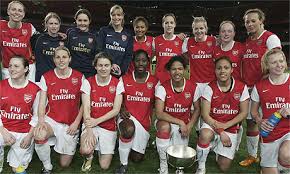 | 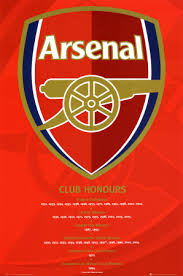 |  | 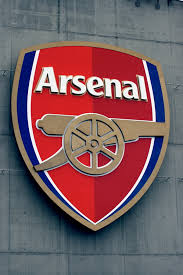 |  |












